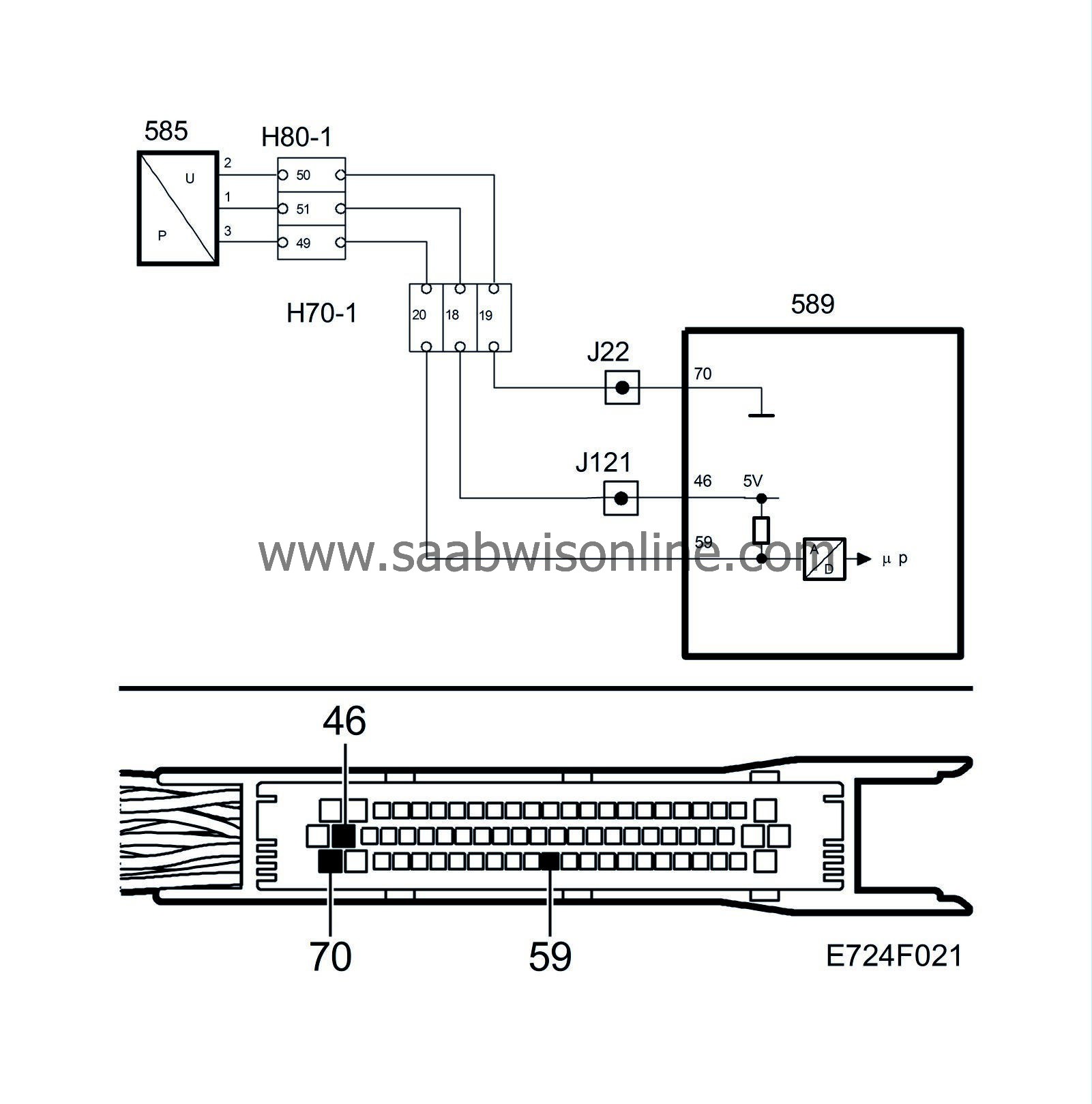P0452
Read the instructions below then
start the fault diagnostic procedure.
Symptom: CHECK ENGINE.
EVAP Tank Pressure Sensor Circuit. Short to Ground.

Fault symptoms
On-Board Diagnostics
Type of diagnosis:
|
-
|
Continuous. However, it is interrupted once the fault criteria have been fulfilled and does not restart until the next driving cycle.
|
Enable criteria:
(Conditions that must be fulfilled for diagnostics to be performed.)
|
-
|
Global conditions for this diagnostic trouble code: When starting the engine, the atmospheric pressure must exceed 78 kPa and the temperature of the coolant and the intake air must exceed -7°C.
|
Fault criteria:
(When enable criteria have been fulfilled, diagnostics will check if the fault criteria have been fulfilled.)
|
-
|
Voltage lower than 0.300 V for more than 5 s.
|
Dependents:
(Once fault criteria have been fulfilled, a number of other diagnostics must report OK before the diagnostic trouble code can finally be generated.)
System reaction to a fault:
(Once the fault criteria have been fulfilled, certain measures will sometimes be taken.)
|
-
|
Purge system integrity diagnosis blocked.
|
OK report:
(This diagnosis may be included as a dependent to another diagnosis and must therefore report OK even if it is continuous. The OK report is also used in fault handling to count down the fault counter.)
|
-
|
Diagnoses for P1451, P1452 and P1453 have been performed once and fault criteria not fulfilled. Fault criteria for P0452 or P0453 not fulfilled.
|
Fault handling:
(Refer to section “Fault diagnosis, general” for more information.)
Diagnostic help
Fault diagnosis concerns an electrical fault in the connecting leads or in the sensor.
Diagnostic tool functions related to this fault:
|
•
|
Diagnostic status for the diagnosis.
|
|
•
|
Pressure sensor reading, unit kPa. The reading should show approx. 0 kPa when the filler cap has been removed.
|
Refer also to the description of readings under ”Fault diagnosis, general” for more information
Check the wiring
Jiggle the wiring harness at several points and in different directions to check if there are intermittent breaks and short-circuits in the leads. Observe the multimeter, test lamp or diagnostic instrument during the test.



